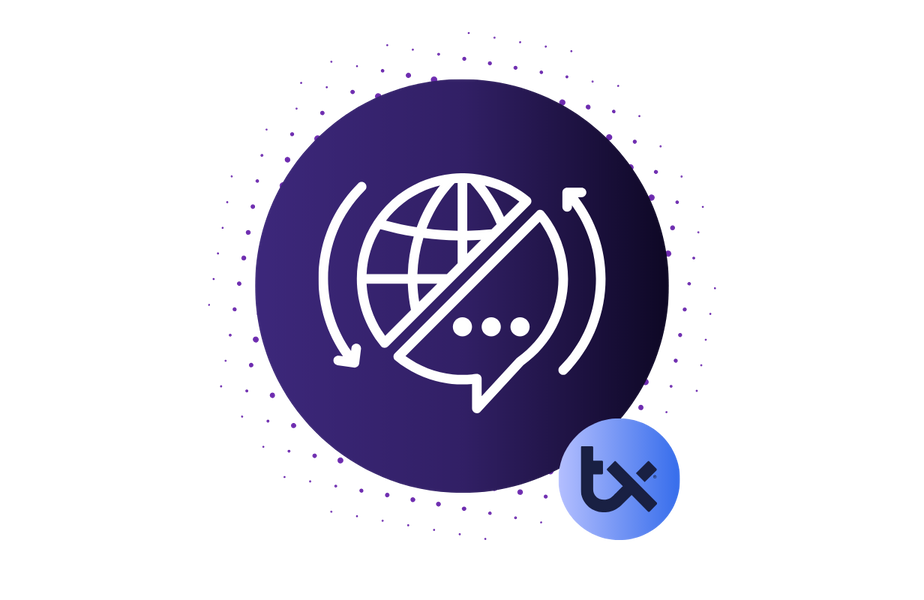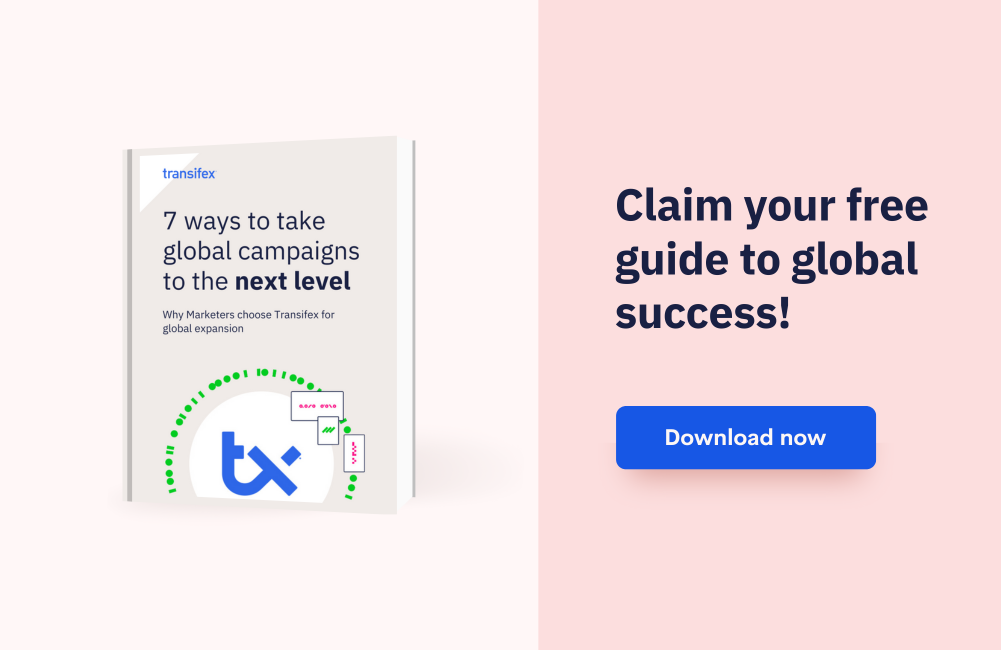Have you ever seen an amazing ad in another language and wondered how it would work for your own brand? The answer is accurate marketing translation.
It’s about finding the cultural equivalent of what makes your marketing effective and delivering it to new audiences.
In this article, we’ll explore:
- The different translation types
- The top benefits of marketing translation for your brand
- Tips for getting the most out of your translation efforts
- Real-world examples of marketing translation in action
Keep reading to find out more!
What is marketing translation?
Marketing translation usually includes translating online and offline marketing content to another target language in a culturally appropriate way to appeal to target audiences and address their expectations.
The key to successful marketing translation is maintaining consistent brand voice and messaging across all translated marketing content.
Standard translation VS marketing translation VS transcreation VS localization: What’s the difference?
#1 Standard Translation
Standard translation involves the word-for-word translation of documents and texts like instructions or product descriptions. It is a cost-effective and usually automated process that doesn’t take into consideration the target audience’s cultural identity.
For businesses seeking to translate their content into languages that share similar cultural nuances with the source language, this can be a great option.
What’s more, standard translation might be a good option for texts that don’t have a marketing purpose and don’t require creativity (like instructions and training manuals).
#2 Marketing Translation
Marketing translation is a complex process that requires a high level of cultural knowledge and creativity.
It involves adapting every type of marketing copy to match different audiences across the globe. The wording and structure of the original copy need to change while maintaining the meaning of the text, messaging, and the brand’s voice.
#3 Transcreation
In transcreation, the message of all marketing materials, including visuals and copy, is adapted from one language to another without losing its tone, context, and intent.
The content is usually remade, and the copy structure changes to align with the target audience’s culture, while the original message is preserved.
#4 Localization
Localization involves adjusting marketing campaigns to match the preferences of a target audience, considering cultural nuances like traditions, superstitions, etc.
Similar to transcreation, localization also preserves the brand’s message by making the appropriate adjustments to align with the target audience’s cultural identity.
What are the benefits of marketing translation?
Marketing translation is a part of every well-executed transnational strategy and can have several benefits for your brand. Specifically, marketing translation:
- Helps businesses stand out from the competition, as it speaks the customers’ language
- Reduces the chances of miscommunication
- Helps businesses break language barriers and reach a wider audience
- Creates a positive image for the business in foreign markets
- Enables easy and effective communication
- Reduces support costs
- Boosts search engine rankings
- Increases brand awareness
What are the challenges of marketing translation?
Marketing translation offers numerous benefits if done correctly. However, the companies that implement it might face certain challenges, including:
- Increased costs
- Delays in time-to-market
And difficulties in:
- Collaborating across different projects
- Navigating the nuances of different cultures
- Handling the cultural differences that impact marketing message
- Selecting the right professionals and tools to translate marketing content
What types of content should you translate?
Social Media translation
Using Social Media to promote your content is a very effective way to expand your business in foreign countries, targeting global audiences.
Two things you should consider while crafting your Social Media campaigns are:
- Not all countries use the same Social Media platforms
- Social Media’s popularity differs in every country
This means you should choose wisely the platforms you want to leverage and localize social content to match each country’s culture and trends!
Website translation
Translating your website is a great way to grow your business, target new customers in foreign countries, and enhance user experience.
Whether you want to expand overseas or already do business abroad, having a localized website will help you:
- Reach a wider audience
- Increase revenue
- Build customer loyalty
- Stand out from competitors
Additionally, a localized website is a must for boosting your SEO, as it helps you rank higher in search results, increasing online traffic.
Video translation
Translating your videos’ titles, descriptions, and subtitles into different languages greatly enhances your online content’s reach. It also helps you connect with several audiences, stay relevant, and attract potential customers.
Remember, a high-quality translation should be one of the priorities of your localization strategy!
Examples of companies implementing marketing translations
#1 Coca-Cola
Coca-Cola’s ‘Share a Coke’ campaign is an example of a successful marketing translation campaign! In this campaign, the company localized its bottles for every country, adjusting the marketing message for every target culture.
Coca-Cola’s personalized approach managed to engage consumers globally! By purchasing bottles with their names written on them in their native language, they felt connected to the brand. This helped Coca-Cola increase customer loyalty.
#2 McDonald’s
The successful translation of McDonald’s catchy ‘I’m loving it!’ slogan and campaign to match global target audiences was challenging.
However, the company managed to keep the brand’s message, tailoring the translation to fit the characteristics of every local audience. From ‘C’est ca que j’m’ for Canada and ‘Me encanta’ for Spanish-speaking countries, McDonald’s translated its slogan into several languages to engage diverse cultures!
#3 Slack
Most Slack users use the popular work messaging platform outside the US. This means the demand for localized content is high! Responding to that demand, Slack leveraged the power of marketing translation to make the platform available in over 10 languages.
That includes more than just the translation of marketing content. Slack also has many cultural references, idioms, and images that match cultural nuances, effectively engaging audiences with the platform.
How to successfully implement marketing translations?
How can you implement marketing translations successfully? Here are some useful tips for effectively translating marketing content!
#1 Ask the right questions
What is your purpose? What are your resources? How are you going to implement marketing translation? How are you going to assess the results of your efforts?
#2 Conduct in-depth market research
Before crafting your marketing translation strategy, you should conduct thorough market research to learn more about your target audience’s preferences.
#3 Get feedback
After completing your market research, we suggest getting feedback from potential customers. This way, you will learn what improvements you should make to your marketing translations. Your goal should be to appeal to your audiences and gain valuable insights into their preferences.
#4 Adjust your marketing campaigns
Staying relevant is one of the biggest challenges of marketing translation. So make sure your marketing campaigns are localized according to the preferences of your target audience while conveying your brand message.
#5 Collaborate with the right professionals and leverage effective tools
Make sure you use professional marketing translation services and effective state-of-the-art translation solutions, like Transifex AI, to create personalized content that aligns with the culture of your target audience.
#6 Stay true to your brand image
Make sure the translated marketing content appeals to your target audience while aligning with your brand image and voice. You might also need to redesign your packaging or modify the website to ensure the new text fits and looks good in the target language.
#7 Align with each market’s cultural preferences
Considering cultural nuances and adhering to cultural norms is key for successfully implementing marketing translation. Take into account traditions, beliefs, and local sensitivities!
#8 Invest in effective team collaboration
The translation process needs to flow smoothly without unnecessary stress, revisions, and miscommunication. Ensure everyone who works on a marketing translation project is on the same page. That way, you can streamline the process and boost productivity.
How can Transifex help you with marketing translation?
Mastering the art of marketing translation is pivotal for expanding your business globally, connecting with diverse audiences, and effectively promoting your products and services in international markets.
At Transifex, we help you break language barriers and boost your global marketing efforts. Offering high-quality, SEO-friendly localized content that matches your target audience’s preferences, we accelerate your international success!
Sign up for a free trial today and engage the world with the power of AI.












